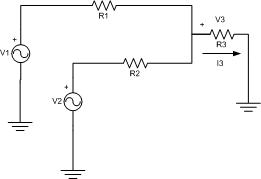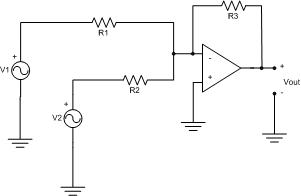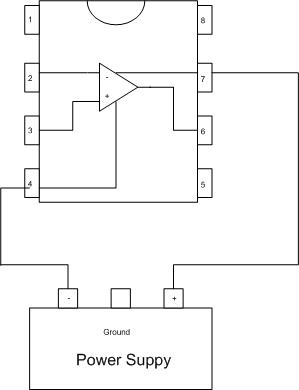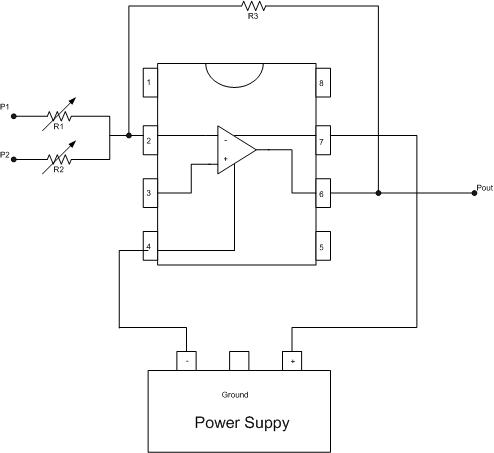EE40 Summer '04, Lab3
Introduction
At the end of this lab you will be able to design an audio mixer. Mixing two or more signals means basically summing them. Of course since with want to decide the amount of each signal to have at the output, we shall implement a weighted sum. Moreover the weights should not be fixed otherwise the mixing factor would be defined one an for all during the manufacturing of the device.
The function we want to implement is the following:
Vout = a*V1 + b*V2
where a and b are variable parameters.
If you look at the expression a little closer, it is the sum of two voltages. It should remember you the superposition theorem. Can we implement this circuit using passive objects only?
Pre-lab (Analysis)
Of course we could:

Figure 1
Q1) Analyze the circuit in figure 1 and compute V3 as a function of V1 and V2. (Hint: use the superposition principle).
Q2) Approximate the result for R3 >> R1 and R3 >> R2
Since the mixer is passive, you may notice that the input voltage will be attenuated. In order to build a better mixer, with a master output we have to complicate the circuit a little bit.
We can use operational amplifiers. Consider the following circuit:

Figure 2
Q3) Analyze the circuit in figure 2 and compute Vout as a function of V1 and V2. (Hint: use the superposition principle).
It is possible now to operate on the value of R3 in order to achieve a sort of amplification.
Simulation (extra question)
Simulate your mixer using whatever version of spice you want. Together with the textbook, you should have two CDs. One of them has the Pspice student version. You can use that to perform your simulation.
You have to make a choice for the values of you resistors. Chose what kind of gain do you want and set values depending on it. Consider that is R1 and R2 are small then the input resistance of you circuit will be small.
Q4.Extra) Analyze the circuit in figure 2 using spice (5spice has a very nice Graphical User Interface, you might want to try it). Set a transient analysis using two sinusoidal sources with amplitude 20mV and frequencies 3KHz and 10KHz.
Lab (experiments)
We are going to use the ua741 from Texas Instrument. You can download the data sheet here (.pdf).
This component requires a dual-voltage power supply and we are going to use +9,-9 Volts like in figure 3 but don't turn on your power supply, or better, don't connect it yet.

Figure 3
As you can see, pins have a number associated with them so please make sure you are connecting everything in the right way.
Now we have to connect all the other components. Pick the resistor R3 that you need based on the analysis you have done in the pre-lab. If you don't remember the color code, you can find it here(.pdf). If you don't find the exact resistor that you need, quickly go over your analysis again and try to match the performances that you want (in terms of amplification) using the values of resistance that are available.
For the inputs, in order to be able to decide the weight in our weighted sum (so that the mixer can be used by a DJ to fade out one channel and fade in another), we will use two pots. The circuit should look like figure 4.

Figure 4
The last step now is to connect the two voltage sources at the two point denoted P1 and P2 in figure 4. Remember that the two sources have to be connected using the ground reference coming out from the power supply.
Set the input using the same values that you have used in spice and observe the output at Pout (with respect to ground of course).
Match the result with the simulation.
Moving the two pots you should be able to see the mixing effect.
(Do not disassemble the circuit, you will need it next time!)
Report
As usual you should describe your experiment:
- What is the experiment setting: components used, their values etc.
- what are the stimuli that you are using: this also includes a description of the experiments that you are planning to do in order to claim that your circuit works!
- what is the result that you are getting
- What are the conclusions